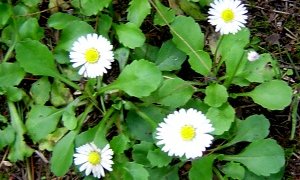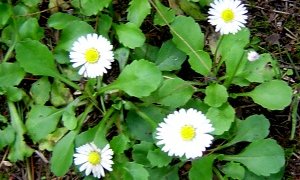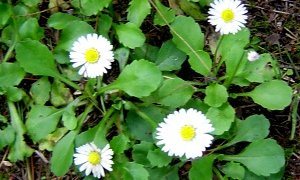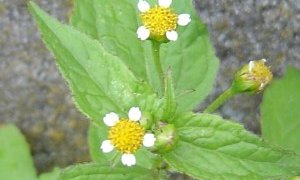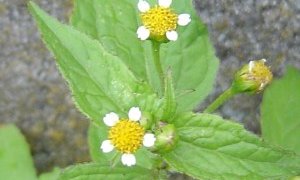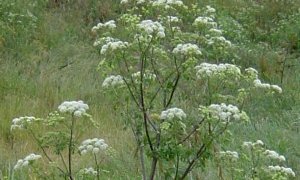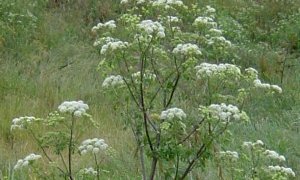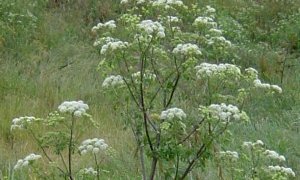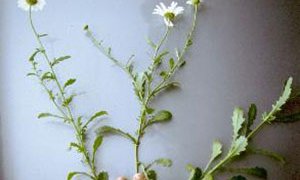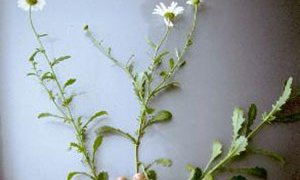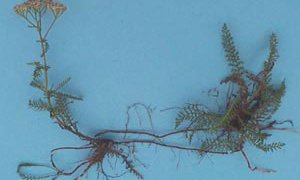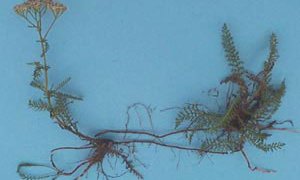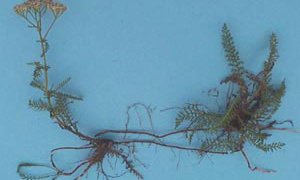Botanical name: Anthemis cotula
Family name: Asteraceae
Overview

Stinking mayweed: A New Zealand annual weed that germinates in spring.
Stinking mayweed is an annual weed that mainly germinates in spring. It can be found in crops sown in spring, and also pastures that are not very dense during spring. Low density of pastures in spring is often due to treading damage over winter, or if they are newly established.
Once present in pastures, most livestock prefer not to eat it, allowing it to dominate the pasture. If lactating cows do eat it, tainting of milk can occur. It grows upright but tends not to grow much taller than 20-50 cm.
Distinguishing features
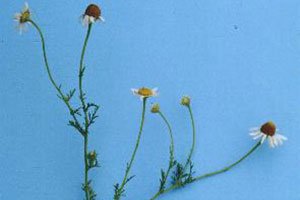
Close view of stinking mayweed with fine leaves and long flower stems.
The finely divided leaves of stinking mayweed can allow it to be confused with a number of other weed species. It has the typical white and yellow "daisy-like" flowers of many Asteraceae weeds. The weed most similar in appearance is scentless chamomile (Tripleurospermum inodorum).
As suggested by their respective names, stinking mayweed has a very strong smell when crushed, unlike scentless chamomile, and the flowers are slightly larger on scentless chamomile and the leaflets slightly finer.
Generally, stinking mayweed is more common than scentless chamomile in the North Island, while scentless chamomile is the more common of the two species in Canterbury and several other parts of the South Island.
Rayless chamomile (Matricaria discoidea) looks similar in the vegetative stage but lacks the white ray florets ("petals") in the flower heads (hence the name). When crushed, rayless chamomile smells like pineapples, so is known as pineapple weed in some countries.
Although the flowers of oxeye daisy are similar, the leaf shape is quite different. Yarrow has similar leaves but very different flowers despite being white.
Control
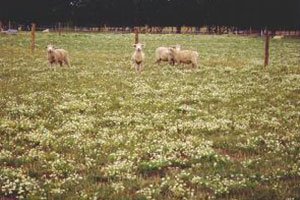
Stinking mayweed in the pasture.
In pastures, stinking mayweed will eventually disappear by itself once it flowers because it is an annual. Pasture management should be used to improve density in the subsequent late winter to early spring period to prevent it from establishing again.
If control is required, a number of herbicides work poorly on this weed. MCPB, MCPA and 2,4-D all give poor control. However, if applied while stinking mayweed is still a young seedling, good control can be obtained in pastures with herbicides such as bentazone (Basagran, or Pulsar), flumetsulam (Preside) and thifensulfuron (Harmony). In crops such as cereals, a number of options exist, such as chlorsulfuron (Glean) and clopyralid (Versatill).

